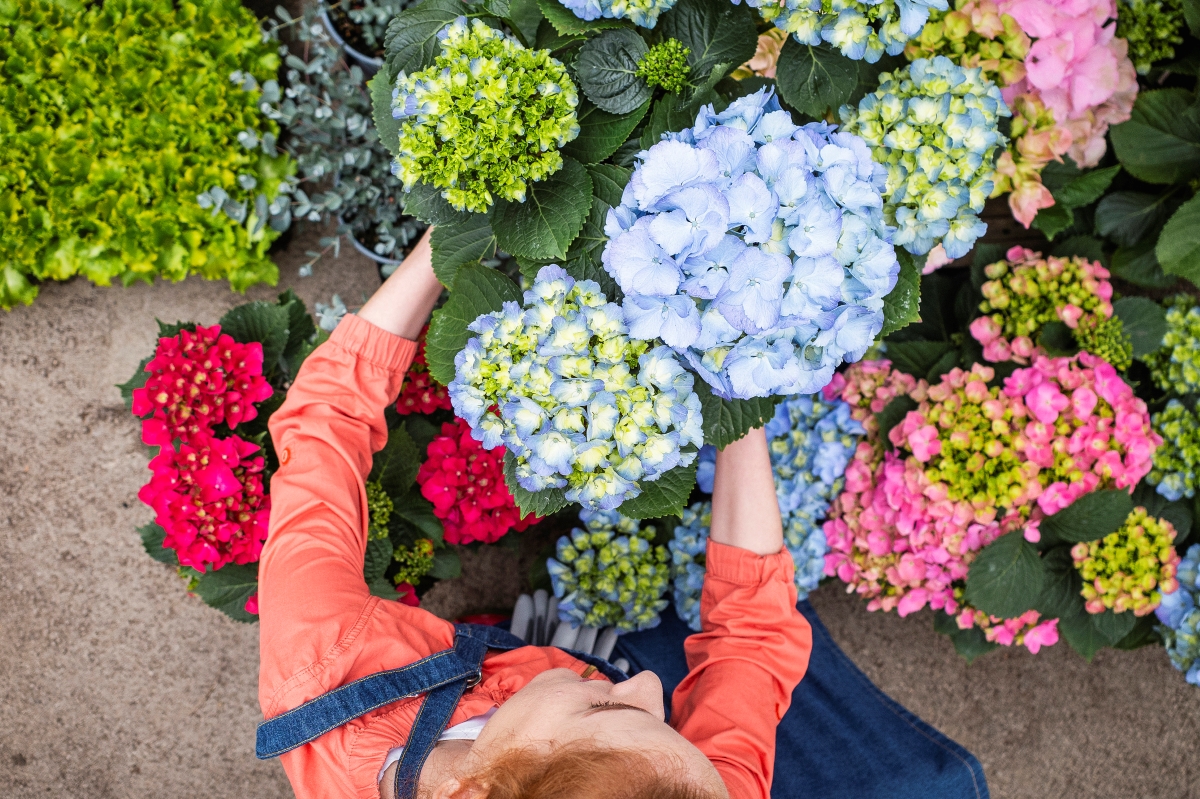

We may earn revenue from the products available on this page and participate in affiliate programs. Learn More ›
Though gardeners can’t see it, soil pH (acidity or alkalinity) is an important contributor to the health (or demise) of plants. The high availability of some nutrients in acidic soil can actually harm some plants. In general, soils in areas with high rainfall (like the Southeast U.S.) tend to be more acidic than those in dry conditions (like the desert Southwest).
As Cornell University Cooperative Extension notes, “Most plants grow best in soils with a pH of 6.0 or 6.5 to 7.4.” In very acidic soil, some nutrients get bound up, preventing their being taken up by plants’ roots. If you don’t know your soil’s pH, you can purchase soil tests to determine it. Should you discover that your soil is highly acidic, with a pH between 4.5 and 5.8, you have a couple of alternatives. You either can apply lime to sweeten the soil or grow acid-loving plants, which not only tolerate such conditions but thrive on them.
1. Bigleaf Hydrangea (Hydrangea macrophylla)
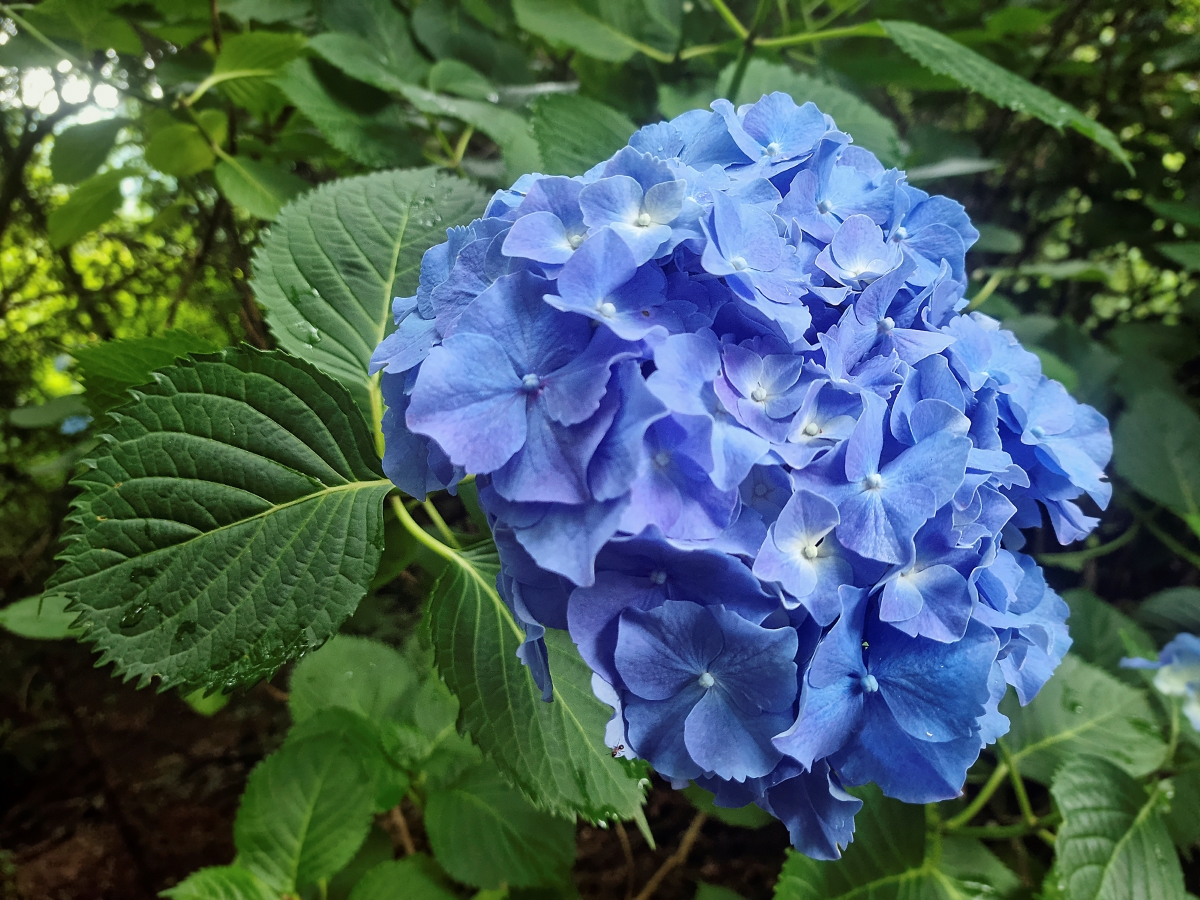
This shrub is famous for how its round “mophead” clusters of blooms change color due to the amount of aluminum they mop up from their soil. According to the North Carolina Cooperative Extension, “For a hydrangea with blue flowers, the soil pH should be acidic with a pH between 5 and 5.5…A soil pH of 6 or more will cause aluminum in the soil to not be available to the plant and results in a hydrangea with pink flowers.” Give this large-leafed plant morning sun followed by afternoon shade or dappled shade in a position with constantly damp but well-draining soil.
Best For: Container, cottage garden, woodland garden
Hardiness Zones: 6 to 11
2. Gardenia (Gardenia spp.)
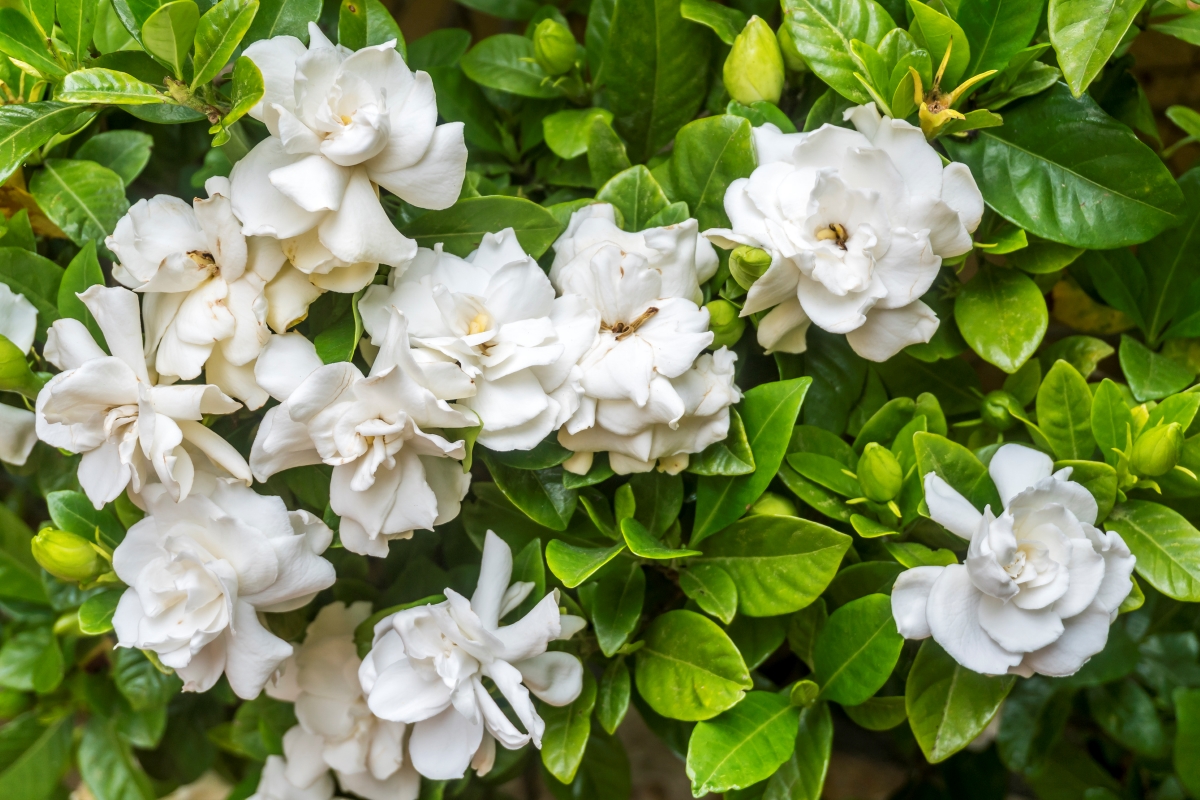
Among the sweetest smelling of the acid-loving plants with its glossy foliage and waxy white or yellow blooms, gardenia prefers a pH between 5.0 and 6.5. In fact, the University of Florida Extension recommends, “Where soil pH is above 7.0…consider an alternative plant or try growing your gardenia in a container.” Even for a potted gardenia, though, gardeners should provide an acidic potting soil. The shrub prefers full sun or partial shade and should be planted high (with its crown slightly above soil level).
Best For: Container, shade garden, foundation planting
Hardiness Zones: 7 to 11
3. Rhododendron (Rhododendron spp.)
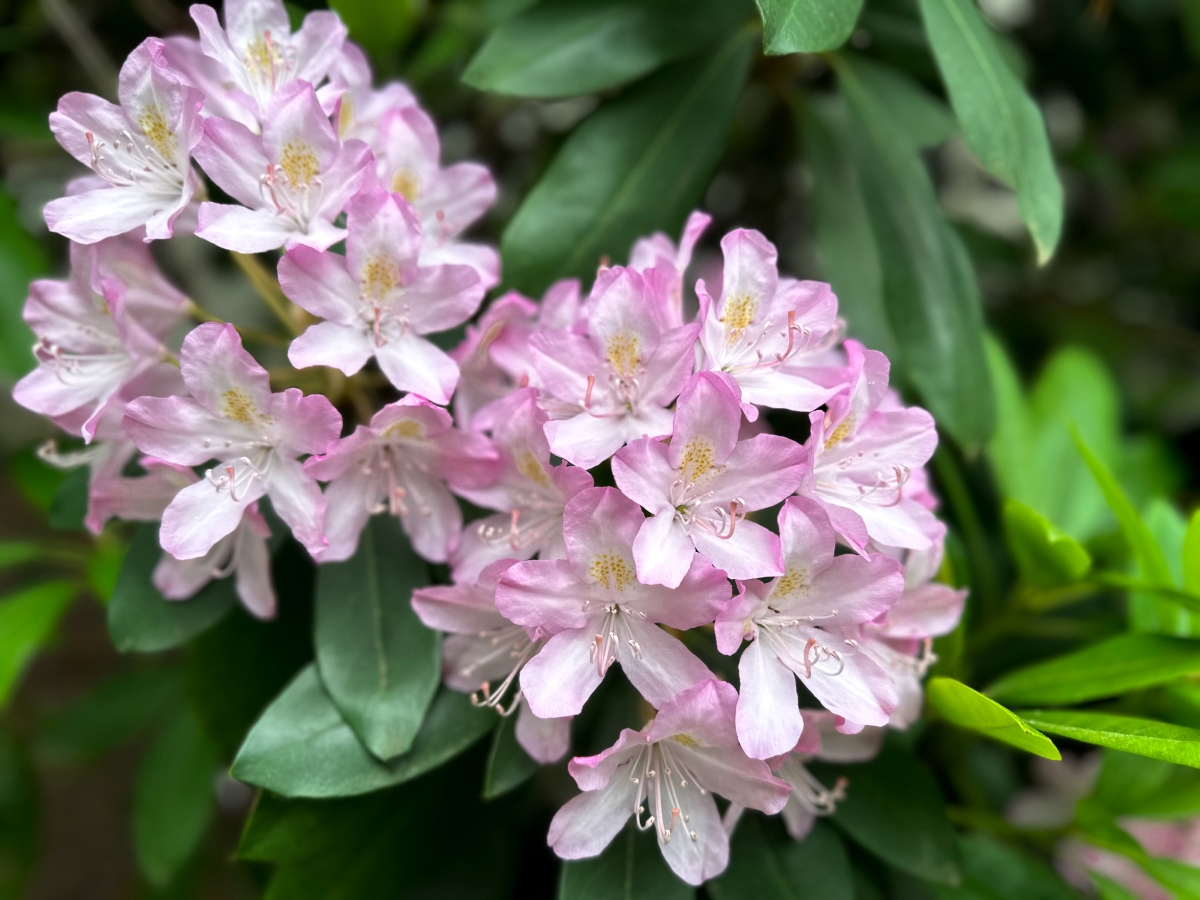
As with gardenia, members of the rhododendron genus—which includes azaleas—prefer to be planted high in well-draining ground. According to the American Rhododendron Society, the pH for rhododendrons and azaleas should be between 4.5 and 6.0. So opt for acid planting soil and fertilizer for acidic-loving plants if you are placing them in a raised bed. To prevent the scorching that sometimes results from too much sun, locate these shrubs—with their showy funnel- or bell-shaped flowers and often leathery foliage—in dappled light under tall trees or give them only morning sun.
Best For: Border, hummingbird garden, shade garden
Hardiness Zones: 4 to 8
4. Gentian (Gentiana spp.)
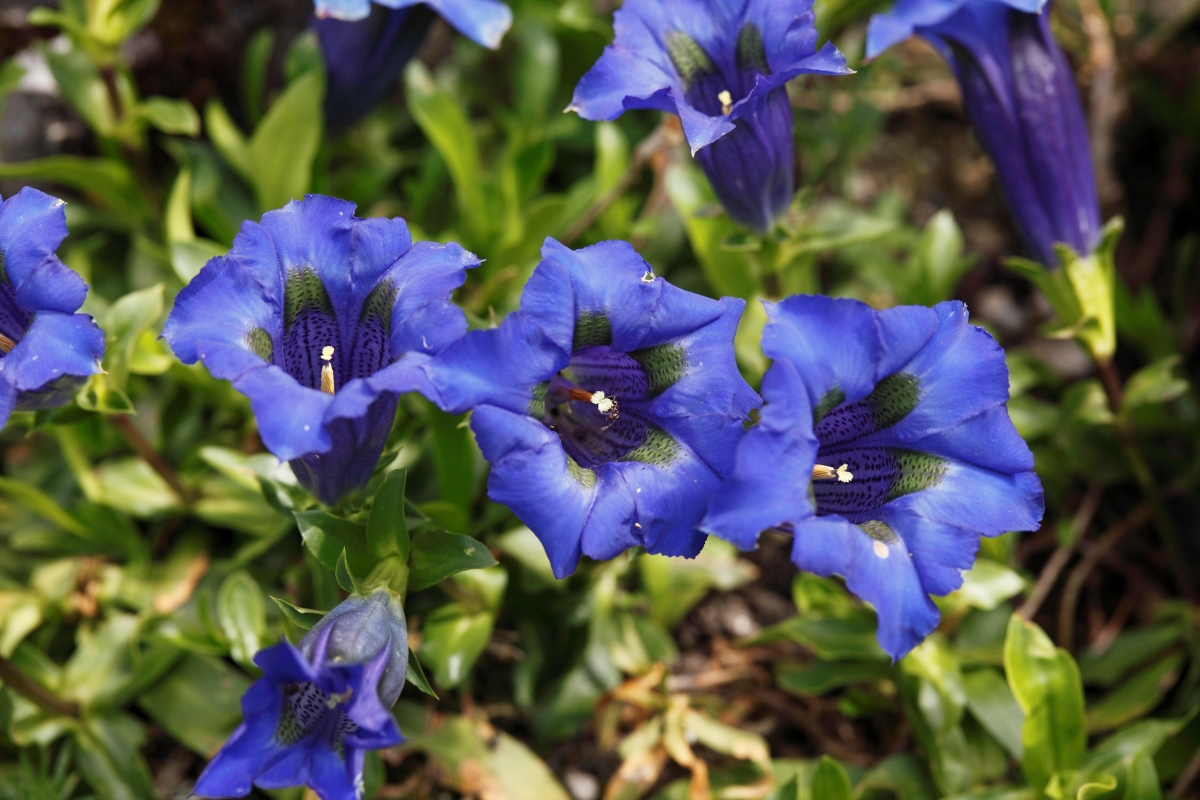
Often labeled difficult but offering truly blue blooms, gentians may be considered touchy simply because their preferences differ according to species. The Alpine Garden Society notes that, “Unlike their spring-flowering cousins, most autumn-flowering gentians are intolerant of lime in the soil,” which makes them acidic soil plants. So, it’s a good idea to opt for autumn types such as Gentiana asclepiadea or G. septemfida if your pH is low. They need well-draining but constantly moist ground, and their light requirements depend on which species you are growing.
Best For: Alpine garden, hillside garden, rock garden
Hardiness Zones: Varies from 3 to 7
5. Japanese Iris (Iris ensata)
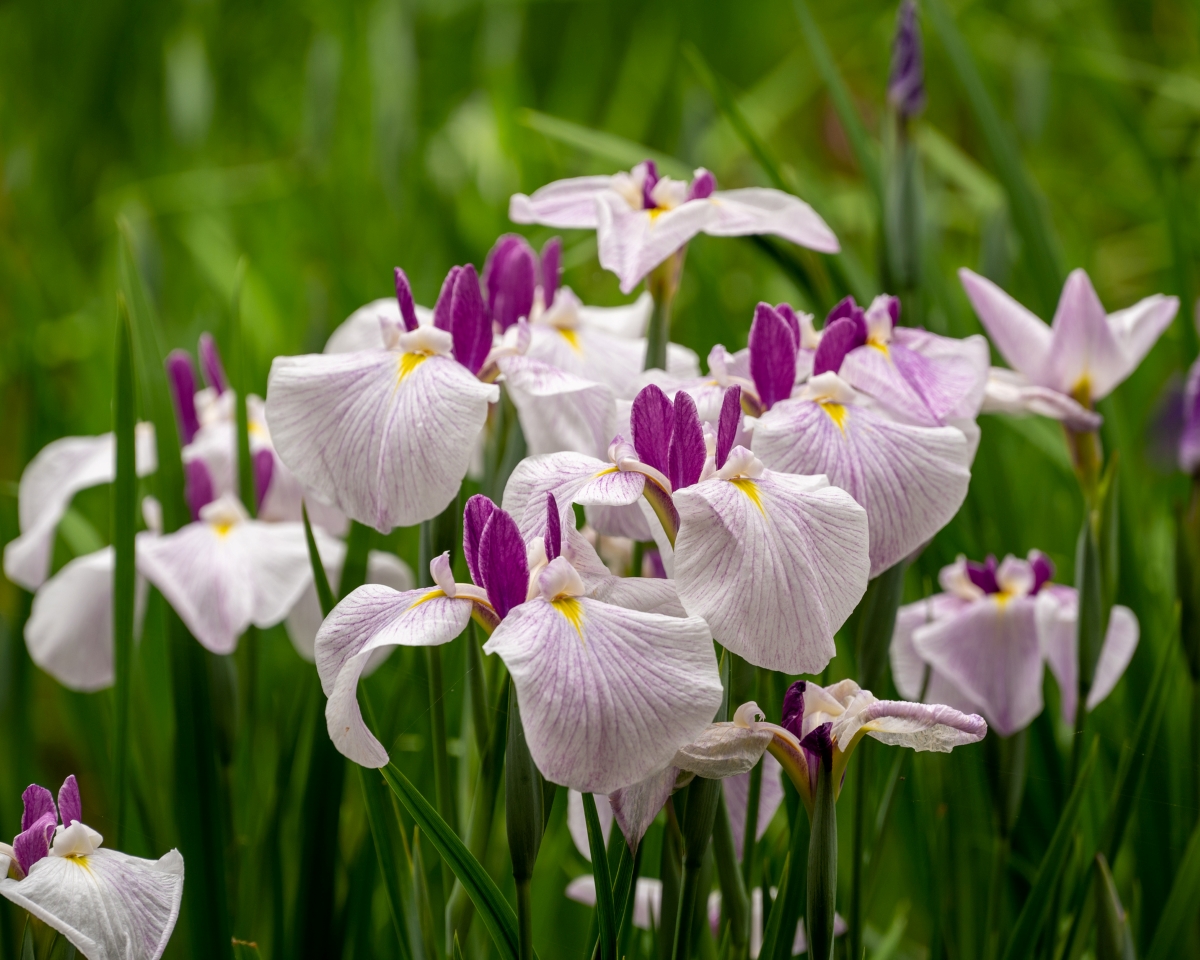
Among the most forgiving of plants, Japanese irises tolerate somewhat soggy conditions, and they also like an acidic soil mix with a pH between 5.0 and 6.5. However, that tolerance extends only so far. Cascadia Iris Gardens warns that these irises “do not do well in alkaline soil, and introducing lime or bone meal to the soil will kill them.” Their large, flattish blooms range in size from 4 to 12 inches across and the flowers like to bask in full sun.
Best For: Border, cutting garden, rain garden
Hardiness Zones: 4 to 9
6. Oriental Lily (Lilium, Oriental Hybrids)
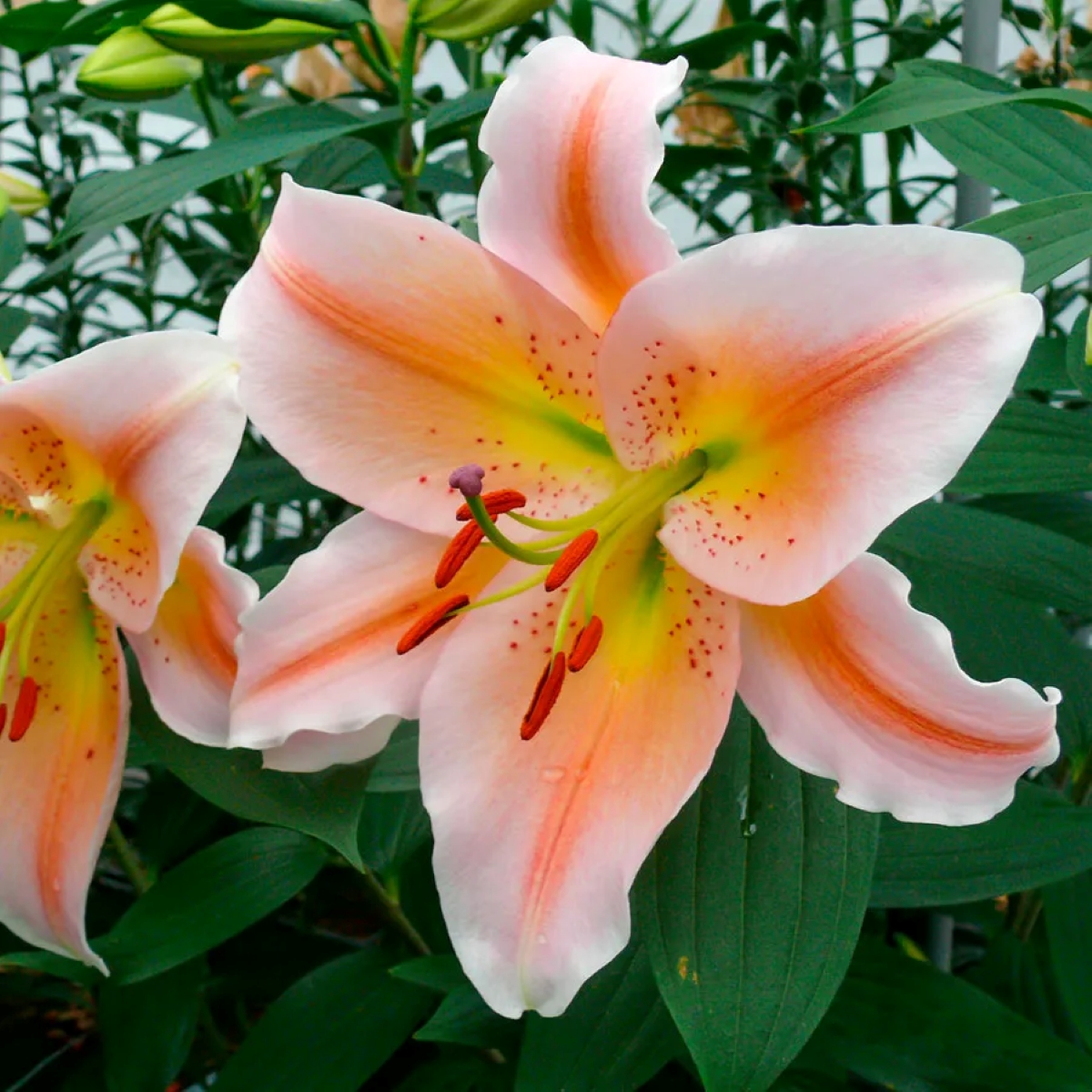
Showy Oriental lilies often sport contrasting bands of color and beauty spots on blooms up to 9 inches wide. The proper pH for lilies that grow from bulbs varies according to the type you are cultivating. BBC Gardeners’ World Magazine recommends acid soil for plants of the oriental type and neutral to alkaline soil for all other varieties. Keep in mind that most lilies do best with their roots shaded and their heads in the sun.
Best For: Border, cottage garden, cutting garden
Hardiness Zones: 3 to 9
7. Blueberry (Vaccinium corymbosum)
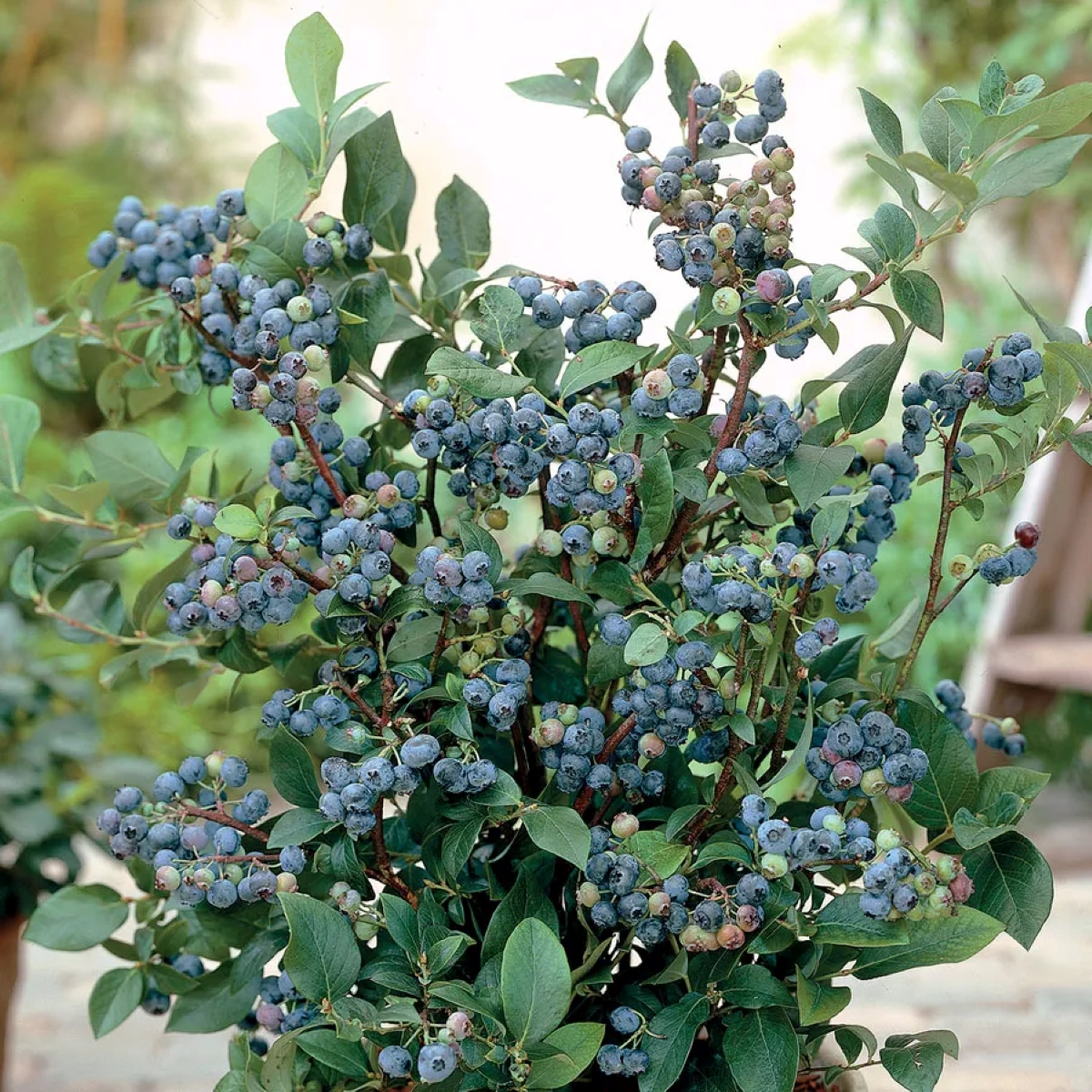
Blueberry is related to the aforementioned rhododendrons and requires sour conditions to produce its sweet berries. That generally means a pH between 4.5 and 5.5. Unlike the rhodies, it prefers full sun for abundant harvests, but can produce some berries in partial shade. You can grow the bushes with their waxy leaves and urn- or cup-shaped pink or white blooms in half-barrels filled with acidic planting soil if you position two types near each other to improve pollination. Be sure to use only acidic fertilizer for blueberries, more accurately described as acid-forming fertilizer.
Best For: Berry garden, hedge, songbird garden
Hardiness Zones: 3 to 8
8. Eggplant (Solanum melongena)
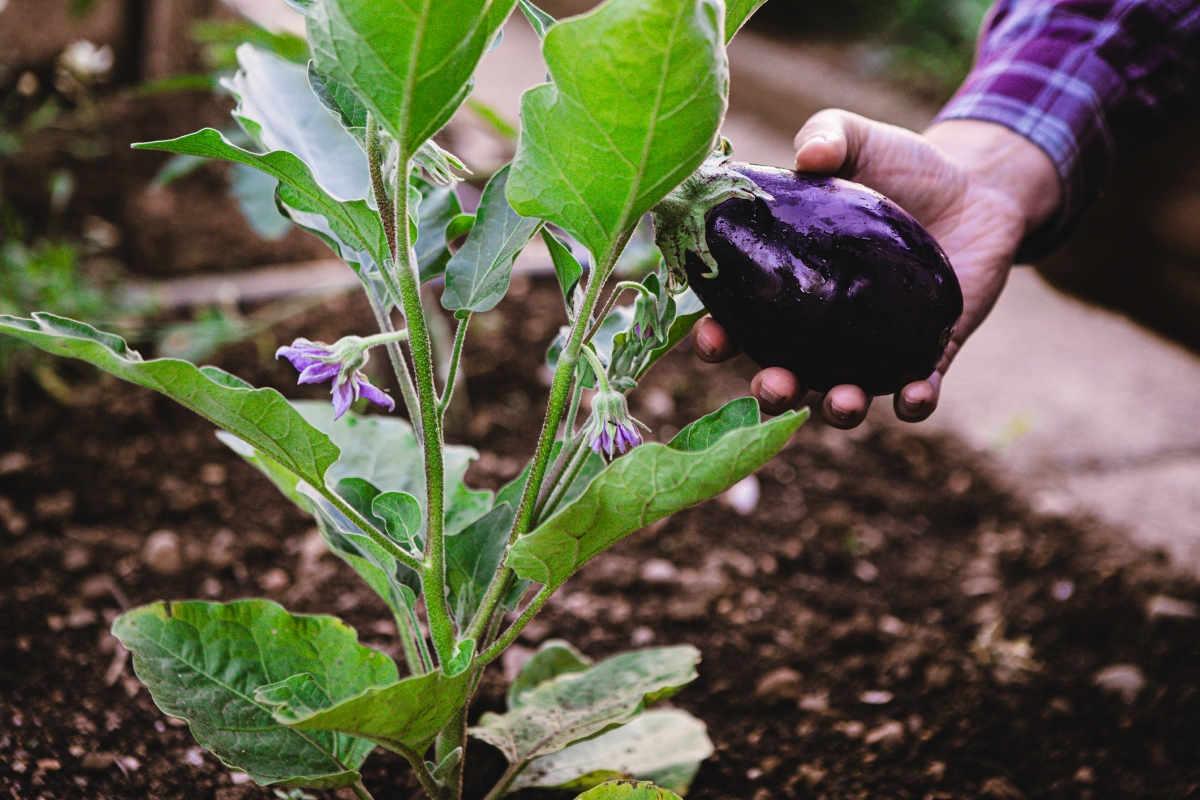
Being one of those vegetables that will accept soil types with almost any pH between 5.5 and 7.5, eggplant is an egg-cellent choice for your acid soil. A heat-tolerant species with attractively large lobed leaves and violet 1½-inch blooms, eggplant will not tolerate cold, so avoid setting it out until after your nighttime temperatures remain above 50 degrees. Although the plants require full sun, make sure there is enough foliage to shade their fruits, which may sunburn otherwise.
Best For: Container, pollinator garden, vegetable garden
Hardiness Zones: 9 to 11
9. Potato (Solanum tuberosum)

Although extremely acid soil generally isn’t considered the best soil for growing vegetables, potatoes thrive in it, since it eliminates one of their common diseases. According to Wisconsin Horticulture Extension “scab problems tend to disappear when soil pH is less than 5.2.” Just be sure that these acid-loving vegetables with their pinnate leaves and small blue, pink, purple, or white blooms receive at least 6 hours of sun per day. Give them well-draining soil and feed them with a fertilizer for acid-loving plants to avoid raising their pH above 6.5.
Best For: Container, vegetable garden
Hardiness Zones: 2 to 11 (annual)
10. Oak (Quercus spp.)
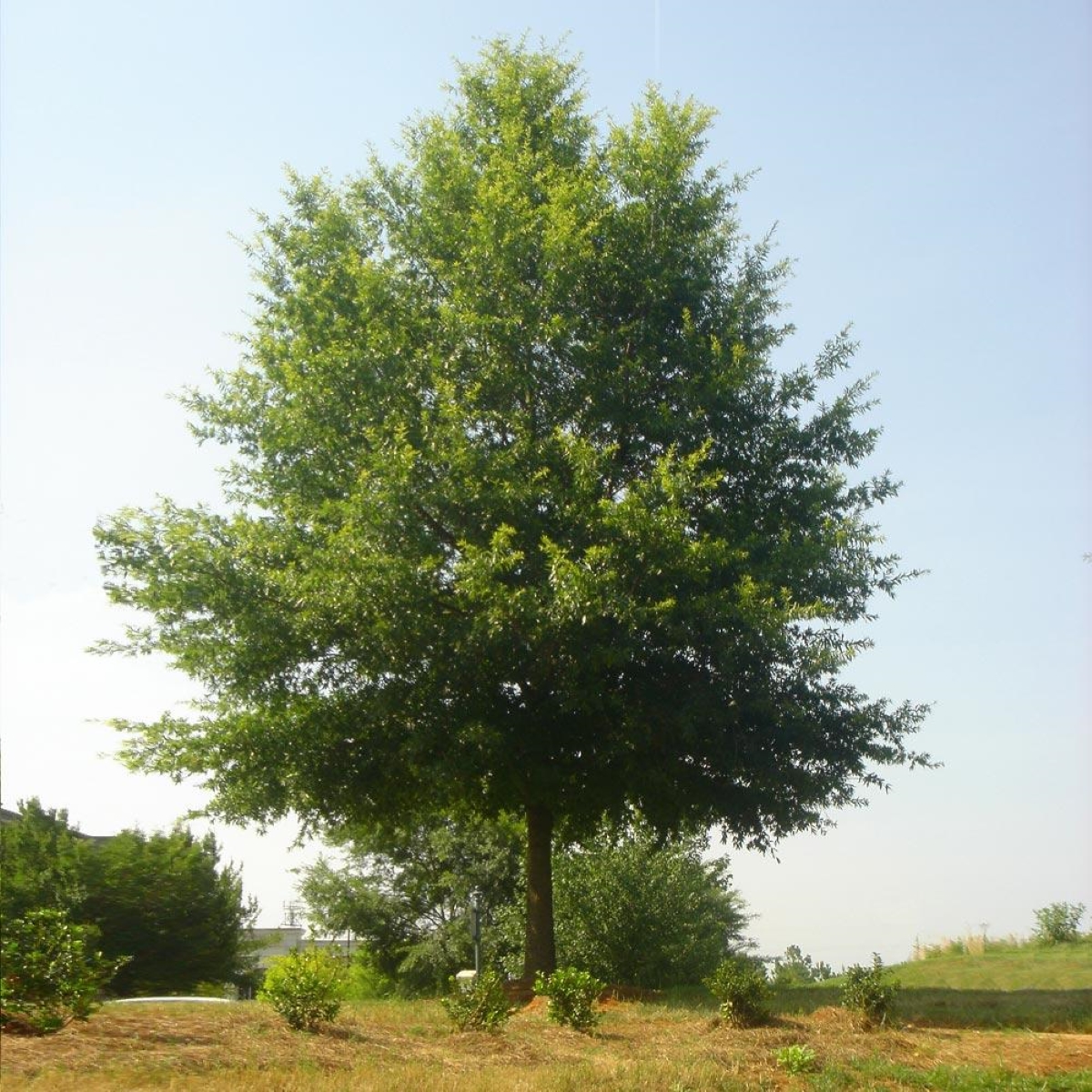
Oak trees generally prefer acidic conditions, though a few of them—such as live oak (Q. virginiana) and post oak (Q. stellata)—will tolerate alkaline soil with a pH up to 7.5. Although their foliage varies widely in appearance and can be either deciduous or evergreen, all oaks produce acorns, though it may take some species 2 years to do so. Most prefer full sun and well-draining soil, but swamp white oak (Q. bicolor) will tolerate wetter conditions, though it doesn’t require them.
Best For: Shade tree, street tree, woodland garden
Hardiness Zones: Varies from 2 to 11
11. River Birch (Betula nigra)
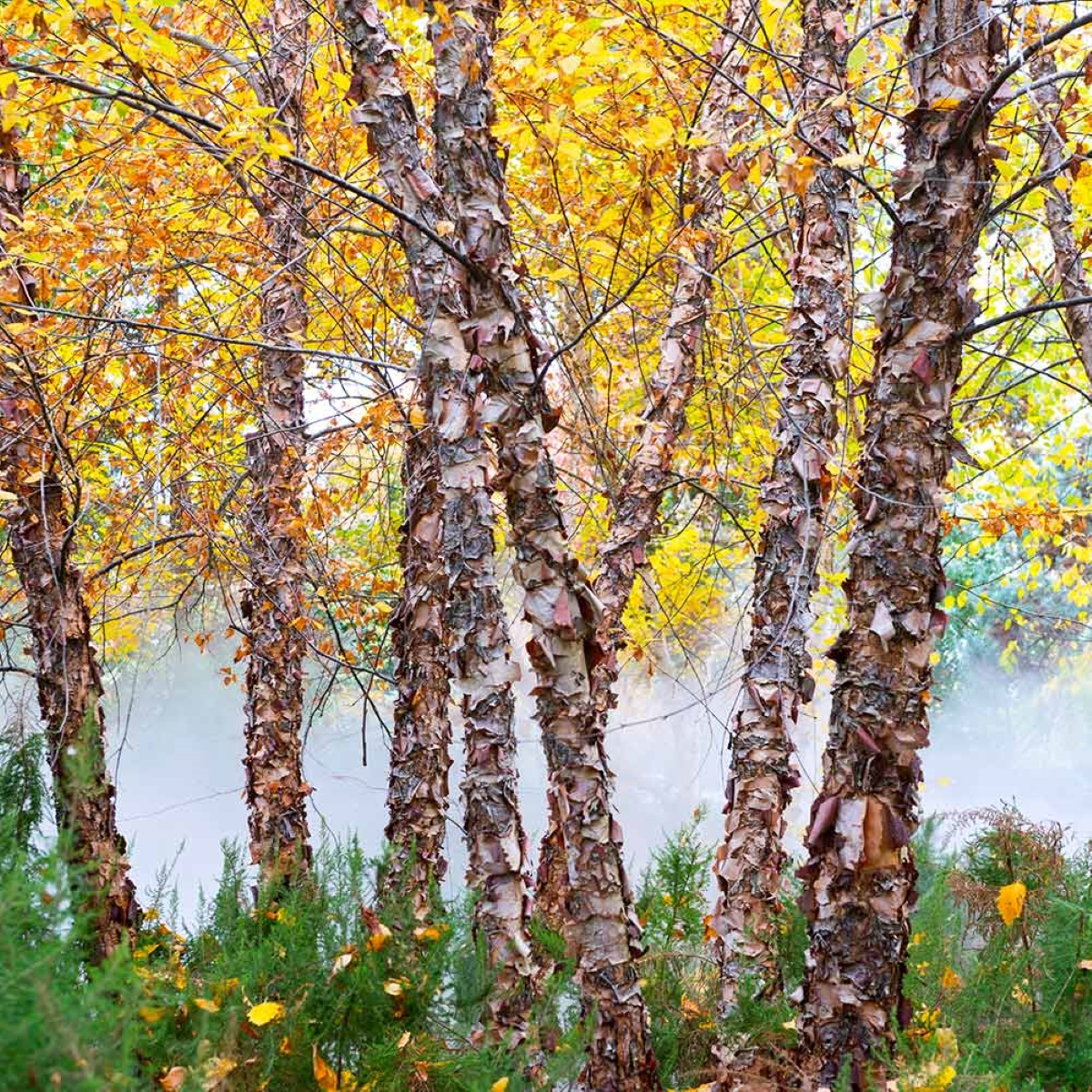
The river birch is an easy native tree to grow. According to Clemson University, it “requires acidic soils and may suffer from leaf yellowing, or chlorosis, caused by an iron deficiency at soil pH levels of 6.5 or higher.” Otherwise, birch is an easy-to-grow tree, with attractively peeling bark on young specimens, scaly bark on older ones, and serrated leaves with lighter undersides. It likes damp but well-draining soil and full sun.
Best For: Children’s garden, shade tree, woodland garden
Hardiness Zones: 4 to 9
